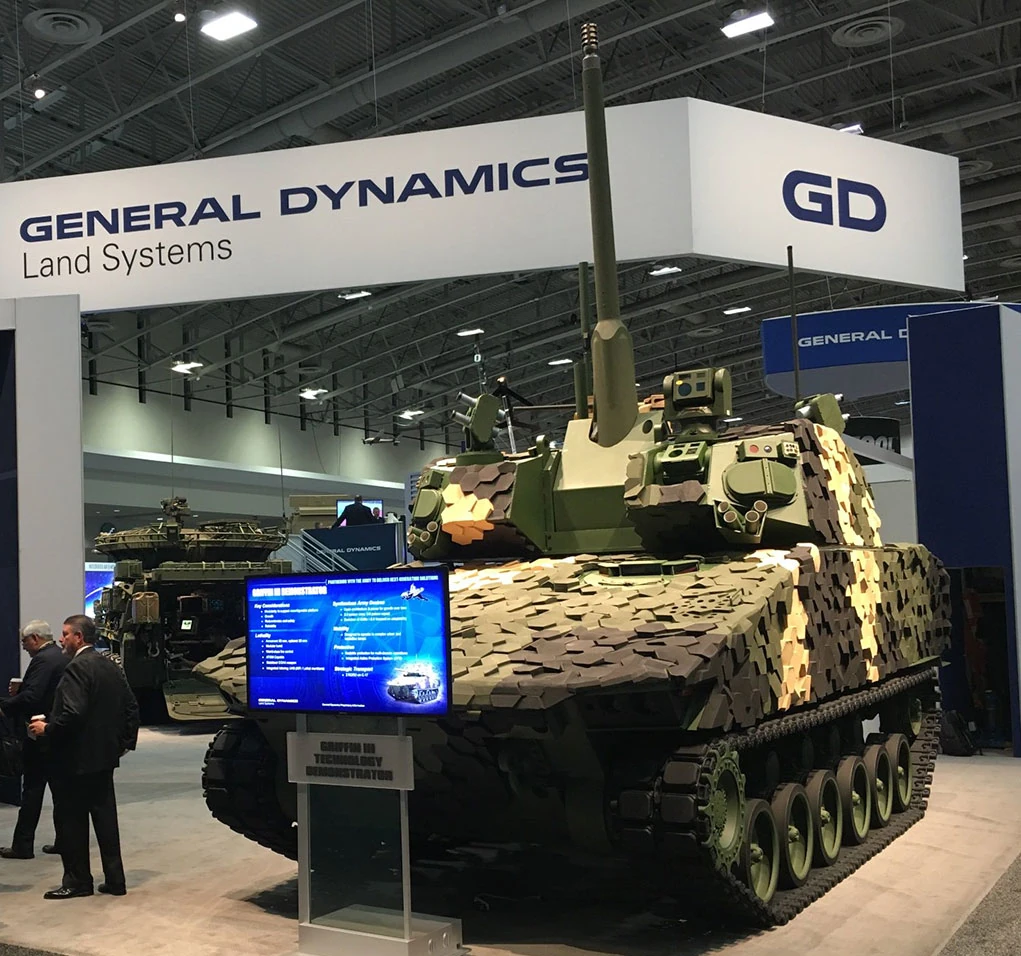The United States Army is currently working with various companies to identify a suitable replacement for the M2 Bradley Infantry Fighting Vehicle (IFV), some of which are suffering massive losses in the Russia-Ukraine war. In 2018, the Army started the NGCV (Next Generation Combat Vehicle) programme to identify a suitable replacement. This initiative would subsequently be rebranded as the OMFV (Optionally Manned Fighting Vehicle). Rheinmetall offered a derivative of the KF-41 in collaboration with Raytheon, while General Dynamics Land Systems (GDLS) set its hopes on the Griffin III.
The much-anticipated duel, on the other hand, never took place. Rheinmetall and Raytheon were eliminated from the competition in 2020 due to their inability to provide an IFV prototype to the Aberdeen test site within the allotted time. However, GDLS did not gain from this decision because the Gryphon III was also eliminated from the competition because its weight was greater than what was specified in the technical requirements for the competition.
A New Strategy
Because of this, the US Army had no choice but to change its strategy and begin following a different protocol. The month of July 2021 saw the awarding of contracts for conceptual study work to Point Blank Enterprises, Oshkosh Defence, BAE Systems, GDLS, and American Rheinmetall Vehicles, the latter of which is Rheinmetall’s subsidiary in the US. The OMFV programme had reached what was referred to as the second stage (Phase 2 – Concept Design Phase) at this point.
GDLS has allied with Switchblade loitering munitions maker AeroVironment, Applied Intuition, and GM Defence. The Rheinmetall North America consortium comprised Raytheon Technologies (RTX), Textron, L3Harris Technologies, Allison Transmission, and Anduril Technologies. BAE Systems teamed with the Israeli firm Elbit Systems, and Oshkosh Defence partnered with the South Korean firm Hanwha. Point Blank Enterprises, a small company in Miami, was included to illustrate entrance to massive programmes for “small and medium-sized firms.
The preselected firms were then entrusted with designing a tracked infantry fighting vehicle capable of transporting at least six infantrymen, fitted with a hybrid (thermal/electric) propulsion system, and a remotely operated turret with a 30 or 50 millimetre cannon.
The five successful applicants were awarded $26.6 million contracts to develop vehicle designs due by November 1, 2022. Based on their evaluation results, the GDLS and Rheinmetall North America consortium proposals have been selected for the next stages of OMFV.
The IFV proposal presented by GDSL was based on the Gryphon IV project, a further development of the Griffin III tracked platform proposed for the OMFV program’s first “run.” GDSL also promoted the “concept” of the unmanned combat platform Katalyst Next Generation Electronic Architecture (NGEA) on the same basis. The OMFV proposal based on this base includes an enormous (uninhabited or optionally inhabited) weapon station with a 50mm XM913 cannon.

The Rheinmetall consortium submitted an IFV Rheinmetall KF41 Lynx variant for the OMFV procurement. The concept of the corresponding variant of the KF41 Lynx IFV (Lynx OMFV Digital Design Concept) was demonstrated using the Rheinmetall LANCE 5030 combat module and the XM913 50-mm cannon.
Previously known as the Bradley Next Generation, BAE Systems and Elbit have submitted a comprehensive improvement to the M2 Bradley infantry combat vehicle based on the redesigned hull and enhanced chassis already used on the AMPV tracked armoured personnel carrier.
Oshkosh and Hanwha presented a platform based on Hanwha’s AS21 Redback IFV for an Australian tender. The AS21 is a modified variant of the South Korean K21 IFV.
Point Blank Enterprises offered the LIBERTY platform concept, presumably based on one of the Israeli projects for the Carmel programme competition for a promising Israeli tracked armoured vehicle.
GDLS and Rheinmetall are back
As expected, three bidders, BAE Systems, Oshkosh Defence, and Point Blank Enterprises, were eliminated from the competition. Initially, it was anticipated that three proposals would be selected for further competition based on the results of the second stage, but for financial considerations, the US Army decided to continue the programme with only two.
The US Army announced on June 26 that Rheinmetall and GDLS had been selected again to continue the programme, now known as the XM30 Mechanised Infantry Combat Vehicle.
GDLS and Rheinmetall North America will participate in the third and fourth phases of the OMFV programme. The third stage (Phase 3 – Detailed Design Phase) requires both participants to develop detailed technical designs of their machines by the first quarter of the fiscal year 2025 (i.e., by October 1, 2024). After that, the fourth stage (Phase 4 – Competitive Prototyping Phase) will commence, where each participant will present seven prototypes (with an option for four more) of their vehicles by July 1, 2025. Total expenses for the third and fourth stages are anticipated to amount to $1.6 billion.
The US Army is anticipated to conclude comparative field testing of these prototypes by July 2026 and select a winner by January 2027. The selected IFV should enter pre-series production (LRIP) in the fourth quarter of the fiscal year 2027, and the first battalion set of OMFVs (XM30) should be delivered by September 2028. In the second quarter of fiscal year 2030, full-scale production should commence.
The stakes of this competition are significant, as the cost of replacing the Bradley is estimated at around $45 billion. The production contract will be awarded in 2027 to deploy future IFVs by 2029.
It should be noted that GDLS has the advantage of already winning the MPF (Mobile Protected Firepower) contract, which aims to provide the US Army with 504 light tanks known as the “Griffin II,” now called the M10 Booker.
